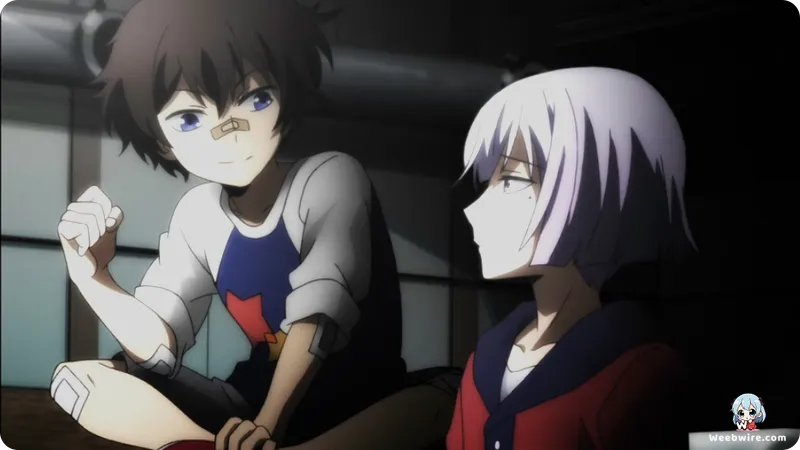Re: Hamatora Unveiled: Exploring Its Revolutionary Multimedia Roots and Darker Thematic Evolution

Dive deep into the compelling universe of Re: Hamatora, the critically acclaimed direct sequel to Hamatora The Animation, which shattered conventional anime narratives upon its 2014 release. Animated by the versatile Studio Lerche, this series is far more than a typical action-mystery; it is a profound exploration of Minimum Holders, their extraordinary powers, and the blurred lines between justice and vengeance, presented through a darker, more philosophical lens. Prepare to uncover the intriguing facts that elevate Re: Hamatora beyond the ordinary, from its groundbreaking origins to the intricate details of its production and character arcs.
A Pioneering Multimedia Genesis
One of the most revolutionary aspects of the entire Hamatora project, including Re: Hamatora, is its pioneering multimedia genesis. Breaking from the traditional model of anime adapting pre-existing manga or light novels, Hamatora was envisioned with simultaneous anime and manga releases. This innovative, collaborative approach meant that creative teams across both mediums worked in lockstep, mutually influencing narratives and character portrayals from conception. This unique development cycle fostered a seamless, cohesive vision across platforms, offering fans an immersive, multi-faceted experience from day one. Studio Lerche, the animation powerhouse behind Re: Hamatora, was pivotal in translating this ambitious vision into breathtaking animation, showcasing their exceptional versatility and prowess in handling complex, original intellectual properties.
Studio Lerche's Distinctive Craftsmanship
Studio Lerche, a name rapidly rising in the anime industry, chose Re: Hamatora as a key project during a period of significant growth and recognition. Known for its distinctive animation style and willingness to tackle diverse genres, Lerche brought the bustling streets of Yokohama and the intense battles of Minimum Holders to vibrant life. Their masterful craftsmanship is evident in every frame, from fluid action sequences to expressive character animations and atmospheric settings that perfectly complement the series' urban mystery and supernatural elements. This commitment to visual storytelling, also seen in their acclaimed works like Assassination Classroom, Scum's Wish, and Toilet-bound Hanako-kun, solidified their reputation for delivering high-quality, engaging narratives.
The Enigmatic Minimum Holders
At the very core of Re: Hamatora lies the enigmatic concept of 'Minimum Holders' and their often bizarre, unique abilities, known as 'Minimums.' These powers, which range from Nice's superhuman speed to Murasaki's incredible strength and Hajime's ability to nullify other Minimums, are not merely flashy; they are intricately designed to reflect the individual character's personality or backstory, adding profound layers to their struggles. A lesser-known detail reveals the meticulous thought process behind each Minimum's design, making Art's tragic past inextricably linked to the nature and limitations of his own Minimum, lending a poignant depth to his character arc.
Art's Compelling Transformation
Art's dramatic transformation from a seemingly benevolent police officer to the series' primary antagonist is arguably one of Re: Hamatora's most compelling and discussed elements. His sudden, drastic shift, fueled by a twisted sense of justice and a personal vendetta against Minimum Holders, stunned audiences and propelled the narrative into complex moral dilemmas. This audacious narrative pivot forced protagonist Nice and the Hamatora detective agency to confront not only external threats but also the harrowing internal conflict posed by a former friend, elevating the series beyond a simple detective story into a profound exploration of character relationships and thematic depth.

Hiroshi Kamiya's Masterful Portrayal of Art
The impact of Re: Hamatora was further amplified by its stellar voice acting cast. The pivotal role of Art was masterfully brought to life by the legendary Hiroshi Kamiya, an acclaimed voice actor renowned for iconic characters such as Levi Ackerman in Attack on Titan and Izaya Orihara in Durarara!!. Kamiya's nuanced performance as Art, particularly through his character's profound transformation, is a testament to his unparalleled versatility. He expertly conveyed Art's internal struggle, chilling resolve, and the immense emotional weight of his actions, crafting an antagonist who is both terrifyingly formidable and tragically sympathetic. His portrayal added immeasurable depth, making Art's motivations understandable, if not entirely forgivable.
The Thematic Evolution: What 'Re:' Signifies
Finally, the 'Re:' in the title is more than a simple sequel indicator; it is a deliberate statement of the series' thematic evolution. While Hamatora The Animation blended seriousness with a lighter, episodic mystery format, Re: Hamatora boldly embraced a grittier, deeply serialized narrative. It fearlessly tackled mature subjects: the ethical quandaries surrounding Minimums, societal anxieties about the gifted, and the blurred boundaries between justice and revenge. This intentional shift in tone and narrative focus provided a richer, more thought-provoking experience, solidifying Re: Hamatora as a distinct and memorable entry in the mystery-action genre, offering an unparalleled deep dive into its established world and characters. This series is not merely a continuation; it is a profound evolution, a testament to innovative storytelling that continues to captivate and challenge its audience.
Credits
Re: Hamatora
Author
Yuuki Kodama (manga artist), Natsumi Ishiguro (original concept)
Cover Art
Yuuki Kodama
Studio
Lerche
Publisher
Shueisha
Producers





